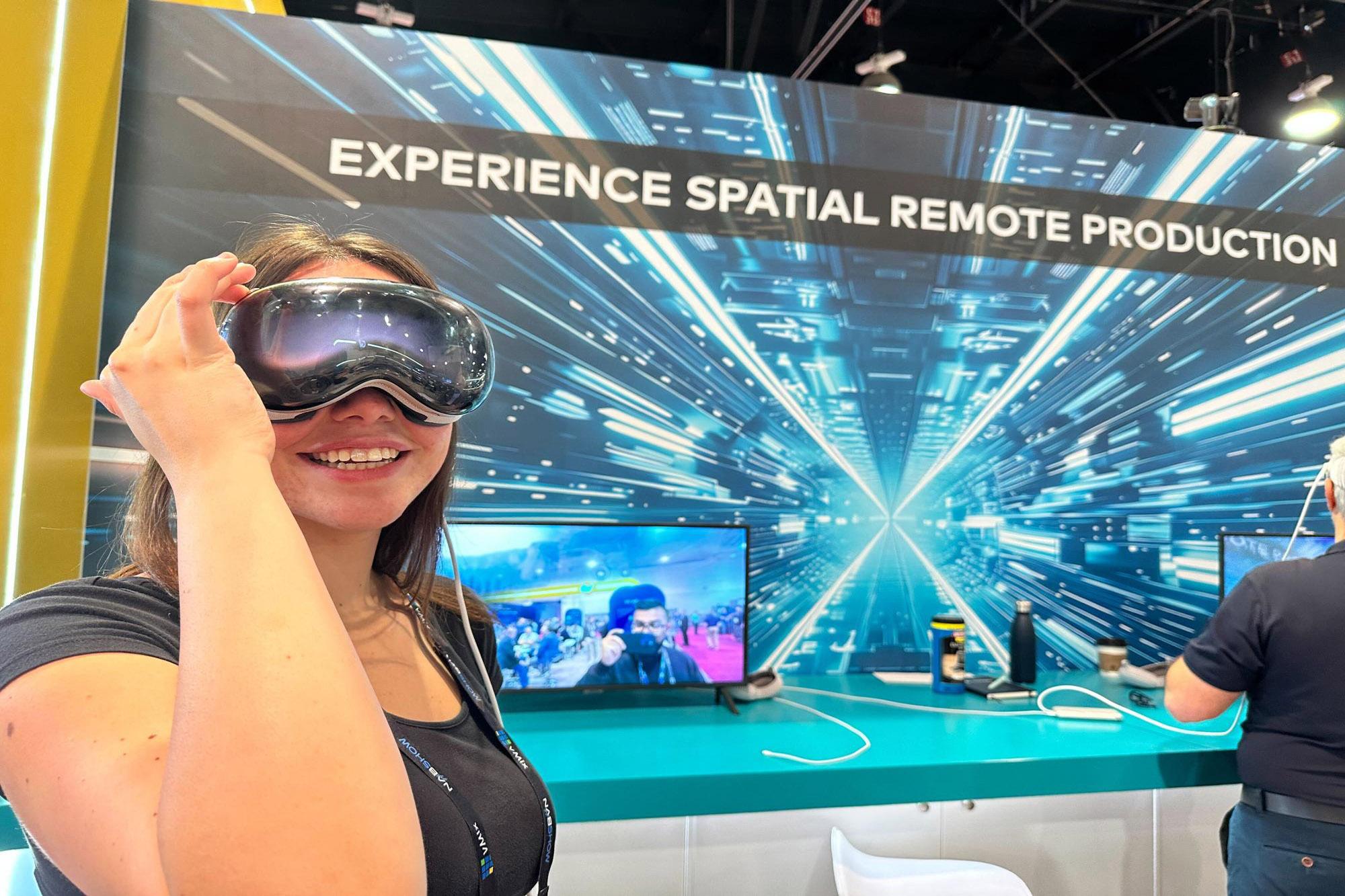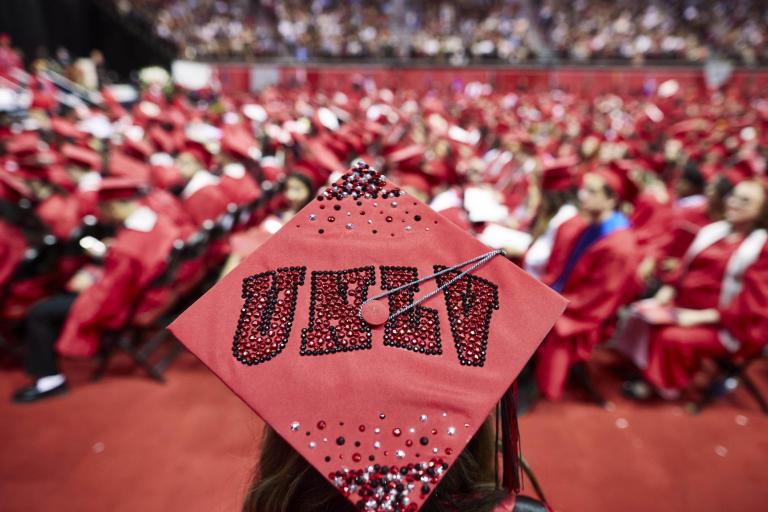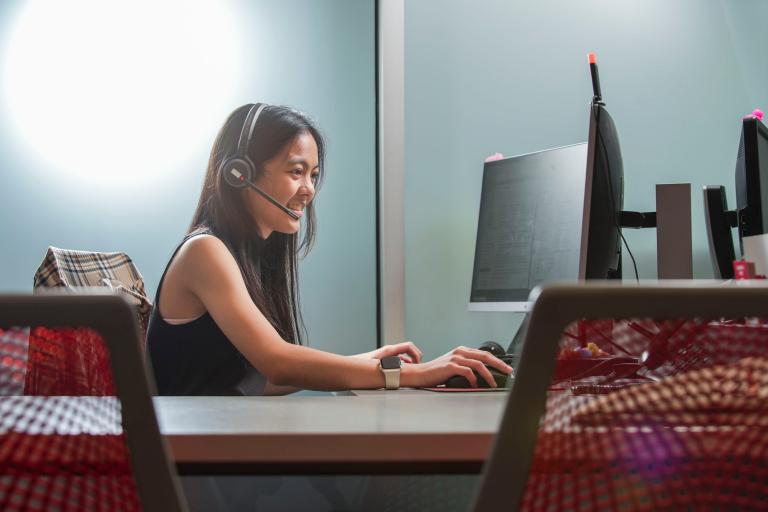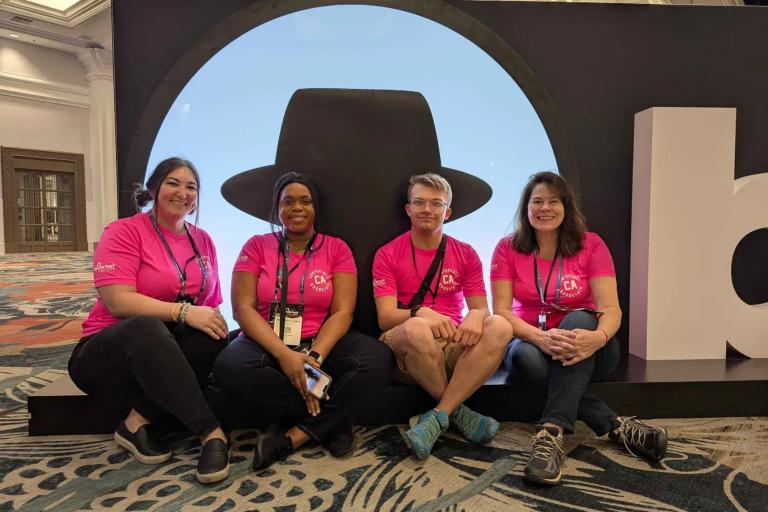UNLV IT Student Workers Get a Look Inside Their Potential Careers

Listen to this article
Aspiring graphic design and communications professionals from the UNLV Information Technology team attended the National Association of Broadcasters Show to see the latest technology and trends in broadcast, media, and entertainment industries.
Strategic communications student workers Ydylle Acosta and Isabella Pupo were among the 65,000 people to explore artificial intelligence (AI) and virtual reality technology that’s transforming content creation at the Las Vegas Convention Center from April 14-17.
“I went to NAB to see what new technology is coming out and how it can be implemented into everyday activities either at work or in a school setting,” said Pupo. “Being able to see different companies communicate their latest product gave me some insight on what catches a customer’s attention, which I think will help me think more creatively, both as an employee and a student.”
Pupo tested a spatial reality experience, where she wore a special headset to interact with a virtual simulation of an editing bay in a control room of a broadcast news station. She was able to use the equipment remotely without the need of being in a physical space. The demonstration also gave her the flexibility to customize her workspace, switching her virtual environment to a mountainscape or other soothing scenes.
Spatial reality could be used to demonstrate a real-life classroom technology design virtually, according to Julie Acheson, a public service intern for the strategic communications unit who joined Acosta and Pupo at the trade show.
“People will be able to interact with virtual 3D objects in the real world with the new spatial reality technology,” said Acheson, who is also a doctoral student in the Interaction & Media Sciences program in the Department of Teaching & Learning. “In the near future, it’s possible that we’ll need to develop engaging content that can be accessed through these devices to ensure an immersive user experience.”
Spatial reality could be used for wayfinding, signage, and other helpful resources that are in classrooms, labs, and other campus spaces, including the IT Help Desk.
Virtual productions were a top attraction at the National Association of Broadcasters (NAB) Show.
Along with media applications developer Rakitha Perera, the team explored a virtual production studio environment. With human or AI anchors, live news is delivered from a realistic 3D virtual set using a giant LED panel showing a virtual background and moving with the camera instead of a physical space or greenscreen.
Since he produces videos about information technology for campus, Perera was interested in learning how virtual production and new camera systems are reimagining media storytelling. He said that it can take days to weeks to produce a video because of the amount of time that’s spent on interviews, filming, and editing.
“Virtual productions can save us a lot of time. It does the rendering and editing in real time and uses realistic backdrops, reducing the need for on-site filming or greenscreens and speeding up post-production,” Perera said.
Acosta, Pupo, Acheson, and Perera also heard from Hot Ones host Sean Evans, who gave audiences a behind-the-scenes look into how he created the successful show, developed his personal brand, and interviewed Hollywood celebrities during his guest appearance at NAB.
This year marks the 101st NAB Show, which held its first Las Vegas show in 1975. The city has hosted the trade show since 1991.


